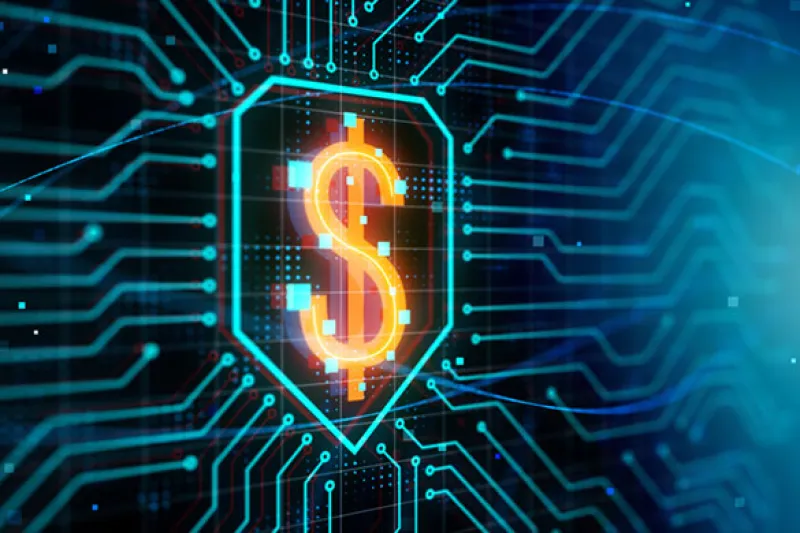While bitcoin has long been the headline-grabbing star of the crypto world, a much more versatile and business-friendly form of cryptocurrency has long dwarfed its usage worldwide: Stablecoins.
These are digital coins or tokens that are backed 1:1 by a fiat currency – such as the dollar, euro, pound, yuan or hundreds of other varieties of legal tender around the world. An individual or organization that issues a stablecoin should maintain a bank reserve or liquid financial instruments to collateralize it. As the name implies, this collateralization makes stablecoins much less volatile than cryptocurrencies that aren’t backed by hard currency (like bitcoin). In turn, this stability makes them more useful for payments and a less complicated savings vehicle (especially for tax purposes) than wildly-swinging bitcoin.
In contrast to stablecoins, it’s important to remember that bitcoin isn’t backed by anything – its trading price is based solely on supply and demand. While the unregulated and volatile nature of bitcoin certainly offers investors outsize growth opportunities at high risk, it also makes it a problematic choice to use for many everyday financial purposes. You may never buy two Papa John’s pizzas with a bitcoin payment that would be worth more than $600 million a decade later – a famous story you’ve no doubt heard by now – but a bitcoin payment today could be worth 10 to 25% more or less by tomorrow afternoon…and triple that in a few weeks.
Stablecoins provide a solution to this problem. And they also give institutional investors a gateway to tap new opportunities for growth and diversification.
Think of stablecoins as digital cash
“Stablecoins are the digital version of cash,” says Philip Gradwell, Chief Economist at Chainalysis, the blockchain data platform. While riskier than a traditional cash bank account due to unlikely-but-not-impossible problems with liquidity and redemption, stablecoins are typically regarded as the “safest” cryptocurrency to hold, due to their collateralization.“When you’re providing an asset-backed digital currency, you need to be more rooted in the real world; you’re actually taking people’s dollars so there’s more regulation that you need to comply with,” says Gradwell. “This makes asset-backed digital currencies more stable than other forms of cryptocurrency.”

A gateway to foreign exchanges
“Stablecoins are vital for many institutional investors because they’re the fundamental gateway into the world of digital currency,” says Gradwell. While some think they’re only useful for trading currencies and investing in decentralized finance products, stablecoins make an entire ecosystem of opportunities far easier to access for large investors. he notes. “We’re primarily seeing institutional investors use stablecoins to get access to foreign exchange, where they can’t use fiat currencies,” says Gradwell,Moreover, starting in mid-March 2021, Chainalysis’ data showed that large investors began buying an increasing number of stablecoins and holding them for longer time periods than they did previously. “The fact that investors are actually willing to hold billions of dollars in stablecoins rather than real fiat dollars, and hold them for a significant period of time as a form of savings, suggests that there’s an untapped market for any company that would start offering that. This is one reason why Facebook’s diem coin caused so much excitement.”
The big two: Tether and USDC
The dollar-backed tether (also known as USDT) is the most popular stablecoin, although it has not been without controversy, settling a suit with the New York Attorney General in February 2021. At the end of July 2021, tether had more than $64 billion in market share – more than half of the total stablecoin supply worth $110 billion (up from just $20 billion in late 2020).The second most popular stablecoin is the dollar-backed USDC. Issued by crypto giants Coinbase and Circle, it had $27 billion in market share at the end of July 2021. The two leading stablecoins are similar in form and use, but differences in auditing, regulation, blockchain usage and transparency may lead investors to prefer one over the other.
“USDC is a very popular stablecoin used for borrowing and lending in decentralized finance,” says Gradwell. For example, large hedge funds are increasingly interested in trading cryptocurrencies on decentralized exchange (DEX) platforms such as Uniswap, says Gradwell, and they must use stablecoins or other currency-backed tokens to access these platforms.
Other popular stablecoins include Binance USD, Paxos Standard, Dai and TrueUSD.

Changing the finance paradigm – finally
When VC investor Marc Andreessen penned his famous “Why Software Is Eating the World“ essay in The Wall Street Journal in 2011, he noted that every industry – from agriculture to media, transportation to oil – have been transformed into a collection of systems run by computer code. This transformation typically gave people new capabilities that they used to create novel products or services. “TikTok, Uber and Airbnb are just three examples of this,” says Gradwell.But the financial industry has been an exception. “The way we create and distribute assets hasn’t changed in any fundamental ways, despite all the new technologies,” Gradwell says, noting that digitization has certainly brought new levels of ease and speed to financial operations, but hasn’t expanded the basic repertoire or menu of those operations.
Cryptocurrency is finally changing that, Gradwell argues, and the stablecoin is a key tool in that transformation. “Tether and USDC are finally allowing us to create and distribute assets in ways that we could not before,” Gradwell, says. “For me, this is the biggest story in cryptocurrency – software is finally eating the finance world, creating new possibilities that are open to everyone.”
The stunning change most other industries have undergone the last two decades – from photography to publishing to retail – may be a harbinger of the new solutions and products we may soon see in finance due to the new capabilities cryptocurrency offers, says Gradwell.
More regulations are coming
Banks and governments will almost certainly be adding to the regulations concerning stablecoins in 2022, if not earlier, as their interplay with hard currency makes stablecoins a top priority for regulatory agencies interested in tightening the controls cryptocurrency market. The regulatory changes coming to stablecoins make it vital to have up-to-date data and comprehensive info when making investment decisions involving cashed-backed digital assets.Institutional investors can only achieve this – and tap the full potential and utility of stablecoins while minimizing risk – by culling key insights from extensive blockchain data. “There’s no research that’s better than seeing where people are actually putting their money,” says Gradwell. “Through blockchain analysis, we can see where stablecoins are being directed and invested at any given moment, helping people understand their market of interest at a much deeper level.”







